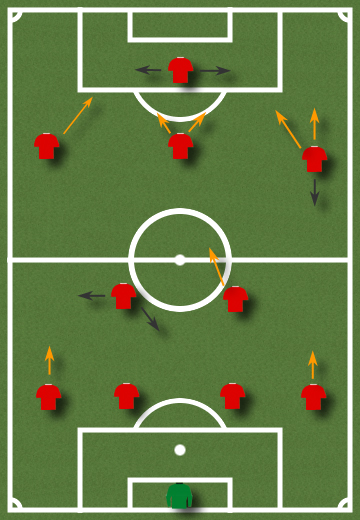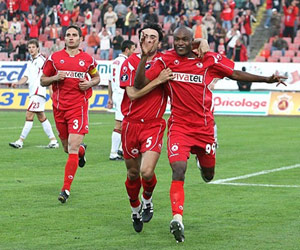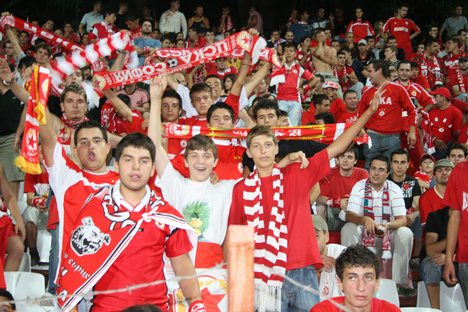-
Recent Articles
The Midfielder as Centerback
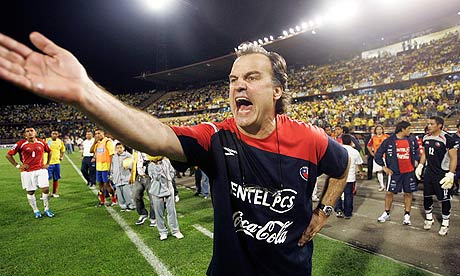 Marcelo Biesla and Josep Guardiola are both managers who play a very high line with their respective sides and who both demand that all players be technically proficient with the ball. Part of playing...
Marcelo Biesla and Josep Guardiola are both managers who play a very high line with their respective sides and who both demand that all players be technically proficient with the ball. Part of playing...Understanding the 4-4-2 Diamond
DEFENCE Despite the fact that there are four ways to play a diamond formation on FM, the differences between them are few and usually subtle. As a starting point, one thing each of them do have...3 at the back and the 4-4-2 Diamond
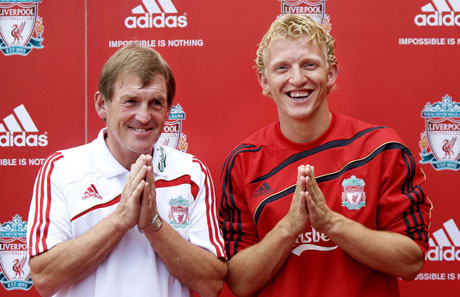 Last week Chelsea v Liverpool became the biggest tactical talking point of the season. Liverpool revived the the 3 man defence that Kenny debuted against Stoke. While with the introduction of Torres for £50m...
Last week Chelsea v Liverpool became the biggest tactical talking point of the season. Liverpool revived the the 3 man defence that Kenny debuted against Stoke. While with the introduction of Torres for £50m...How To Set Up A Back Four
 Last year, I wrote a guide about how to play a simple 4-4-2. One of the major components of that is the back four. In fact, most modern formations build upon four defenders; two full backs and two centre...
Last year, I wrote a guide about how to play a simple 4-4-2. One of the major components of that is the back four. In fact, most modern formations build upon four defenders; two full backs and two centre...Building Your Defence: Full Backs
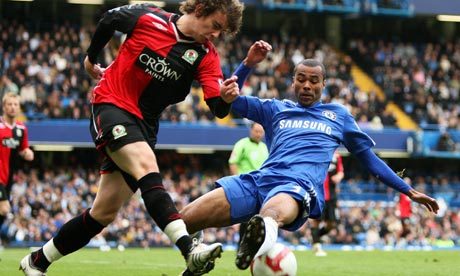 The modern full back is quickly becoming one of the most important players on the team sheet, infact even back in the days of Brian Clough, fat ed' argued that because of the space these players get in the final...
The modern full back is quickly becoming one of the most important players on the team sheet, infact even back in the days of Brian Clough, fat ed' argued that because of the space these players get in the final...
JOIN 1,249 READERS - SUBSCRIBE NOW TO OUR FOOTBALL MANAGER NEWSLETTER
Get the latest FM news & best community content delivered directly to your e-mail inbox!
From Giant to Underdog: Managing a Bulgarian Powerhouse (Part 2)
Written by: Mihail Vladimirov
Category: Strategy
Posted on: August 18, 2010
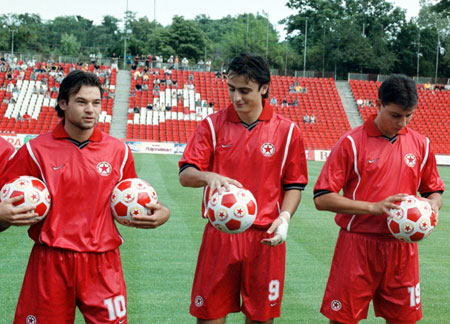
August 18, 2010
Given the fact that I have players, which don’t possess the all-round skill to transition between the phases well enough, I think it’ll be more productive to stick to rigid type of players positioning and movement on the pitch.
With such a formation, the separated lines should have enough cover between them just because they are in pairs and more imporatantly – they are near enough between each other. With such conservative setup my players will stick to their base position and will position themselves, in each phase, only due to their specific role, duty and tactical instructions.
With the team yet blended, lacking key aspect of football skill, such a setup will give the team more stability and cover in phase defence. The negative thing will be that we will attack with less numbers, movement and unpredictability.
From my players I’ll demand some crucial things, which will help both our defence and our attack – to keep the possession in our favaour, most of the time. To achieve that they should learn to pass the ball with short passes, even sideways or backwards, but the main aim is to keep the possession. This is a safety approach, which will complement our rigid movement between the two phases and in each phase. Adding furtner more to this safety approach I’ll limit my players creative freedom – their focus should be to do the “simple” things well. I prefer to recycle the possession, starting our attacks, over and over again, but to not lose the ball, just because one of them tries something, he can’t execute properly with his limited skills, or risk to lose the ball just because he will think that : “oh, I think that pass may do the job”, and then just unleash killer pass when there is less than minimal chance the ball to get to the other player.
The defence includes a flat four with two limited central defenders, aiming to break the oppositions attacks with physical presence. The fullbacks given an attacking duty, but not so attacking as if they were pure wing-backs. They join our attack only when they can going forward without the ball when there is an no obvious chance that the opposition could break and attack us via counter-attacks. But the fullbacks will have one major aim – to cross the ball from deep. My aim behind this is to add some surprise and, hopefully, to catch the opposition’s defence out of position. I prefer such as crossing style from my fullbacks, rather than to ask from them to dribble down the whole flank and then just cross the ball when the whole opposition team have all the time to re-shape and cover all of my attacking players.
Ahead of our defence will act the double pivot. One of that pair will be the much needed pressing-type defensive midfielder and the other – our main playmaker, who will act from deep position aiming to dictate our attacks from this zone, helping his partner in covering the righ-hand part of the pitch when we are defending, while his partner covers the left side.
His partners job is to cover our left-hand side, covering the space behind our left inside-forward, giving him freedom to roam all over the last third, starting wide and then cutting inside with or without the ball.
When the team is facing huge pressure from the opposition the defensive midfielder will drop deeper and act as shield for our defensive line (ie more like anchor man than pure destroyer) while his partner will act as the pressing-type defensive midfielder ahead of him.
Our front three includes three different types of players as roles and tactical instructions. The left winger will act as inside-forward, aiming to start wide and then cut inside,with or without the ball. His main task is to roam all over the left-hand side of our attack, often taking central position, acting as second-central-striker. His defensive task will be to put pressure on every player that is near to him.
The player on the right side of our attack is having “balancing” role – acting as pure winger, but with more defensive mind. In attack his job is to give the team width from that side, running and crossing , having freedom to pop-up from deep position running from deep, when the attack is started away from him and he is not with the ball. In phase defence he acts as our “work horse” - pressing and tackling his near opponent, balancing our front three, participating in our transition between attacking-to-defending.
The player behind the lone striker will act as pure classic attacking midfielder, with a role, which is something between second striker and advanced playmaker. He will have the movement freedom with and without the ball to go forward and moves between the channels ; and will have the freedom to pull all the strings from the zone he is – ie the last third. In phase defence this player will have huge task – to close down early and high on the pitch every player that wants to receive the ball in that zone and thinks he is having easy time to control it and pick out a pass.
The lone striker is the player, who spearheads our attacks. Always aiming to play on the shoulder of the defenders, always trying to occupy the spaces between the two central defenders or between a fullback and a central defender. He will move often move wider and deeper with the aim to open space for the players behind him – mostly the inside forward and the attacking midfielder, forming somekind of attacking trio with them. In phase defence this player will have the aim to close down the central defenders and/or fullback (depending on his moment position) and preventing him to distribute the ball forward.
In a few days time we will see how this tactic plays out in a friendly as we prepare for the new season. Using videos we should be able to capture a full analysis of the game.
About The Author: Mihail Vladimirov
From Bulgaria, you will find 'Cagiva' lingering around the FM-Britain forums waiting to help or discuss the tactical intricacies of football. As part of the Tactical Think Tank, he has helped on many projects including Tactical Theorems '10 and the TT10 Appendix.
Download Our Tactical Theorems '10 eBook Absolutely Free

Presenting the most comprehensive tactic design and match strategy guide to the Football Manager series ever created!
Written by FM match engine beta testers, it's 60+ pages of easy-to-read concepts and ideologies for getting your team playing exactly how you want each match! It's been downloaded over 100,000+ times to date!
Find out more information about our tactical eBook
and download Tactical Theorems '10 right now!
Written by FM match engine beta testers, it's 60+ pages of easy-to-read concepts and ideologies for getting your team playing exactly how you want each match! It's been downloaded over 100,000+ times to date!
and download Tactical Theorems '10 right now!

